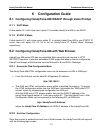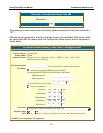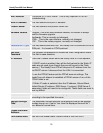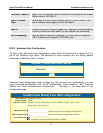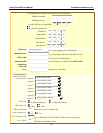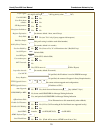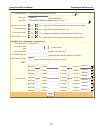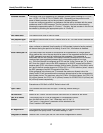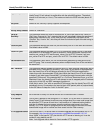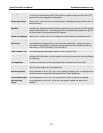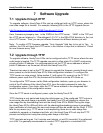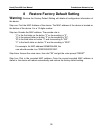
HandyTone-486 User Manual Grandstream Networks, Inc.
22
Register Expiration
This parameter allows the user to specify the time frequency (in minutes) the
HandyTone ATA will refresh its registration with the specified registrar. The default
interval is 60 minutes (or 1 hour). The maximum interval is 65535 minutes (about 45
days).
Early Dial
Default is No. Use only if proxy supports 484 response
Dial Plan Prefix
Sets the prefix added to each dialed number
No Key Entry timeout
Default is 4 seconds.
Use # as
Send Key
This parameter allows the user to configure the “#” key to be used as the “Send”(or
“Dial”) key. Once set to “Yes”, pressing this key will immediately trigger the sending of
dialed string collected so far. In this case, this key is essentially equivalent to the
“(Re)Dial” key. If set to “No”, this # key will then be included as part of the dial string to
be sent out.
Local SIP port
This parameter defines the local SIP port the HandyTone ATA will listen and transmit.
The default value is 5060.
Local RTP port
This parameter defines the local RTP-RTCP port pair the HandyTone ATA will listen
and transmit. It is the base RTP port for channel 0. When configured, channel 0 will
use this port_value for RTP and the port_value+1 for its RTCP; channel 1 will use
port_value+2 for RTP and port_value+3 for its RTCP. The default value is 5004.
Use Random Port
This parameter, when set to Yes, will force random generation of both the local SIP
and RTP ports. This is usually necessary when multiple HandyTone ATAs are behind
the same NAT.
NAT Traversal
This parameter defines whether the HandyTone ATA NAT traversal mechanism will be
activated or not. If activated (by choosing “Yes”) and a STUN server is also specified,
then the HandyTone ATA will behave according to the STUN client specification.
Under this mode, the embedded STUN client inside the HandyTone ATA will attempt
to detect if and what type of firewall/NAT it is behind through communication with the
specified STUN server. If the detected NAT is a Full Cone, Restricted Cone, or a Port-
Restricted Cone, the HandyTone ATA will attempt to use its mapped public IP address
and port in all the SIP and SDP messages it sends out.
If this field is set to “Yes” with no specified STUN server, then the HandyTone ATA will
periodically (every 10 seconds or so) send a blank UDP packet (with no payload data)
to the SIP server to keep the “hole” on the NAT open.
Use NAT IP:
NAT IP address used in SIP/SDP message. Default is blank.
Proxy-Require
SIP Extension to notify SIP server that the unit is behind the NAT/Firewall.
TFTP Server
This is the IP address of the configured TFTP server. If it is non-zero or not blank, the
HandyTone ATA will attempt to retrieve new configuration file or new code image from
the specified TFTP server at boot time. It will make up to 3 attempts before timeout
and then it will start the boot process using the existing code image in the Flash
memory. If a TFTP server is configured and a new code image is retrieved, the new
downloaded image will be verified and then saved into the Flash memory.
HTTP Upgrade Server
The URL for the HTTP server used for firmware upgrade and configuration via HTTP.
For example, http://provisioning.mycompany.com:6688/Grandstream/1.0.5.16
Here “:6688” is the specific TCP port that the HTTP server is listening at, it can be
omitted if using default port 80.
Note: Auto Upgrade has to be set to Yes to enable HTTP upgrade.



